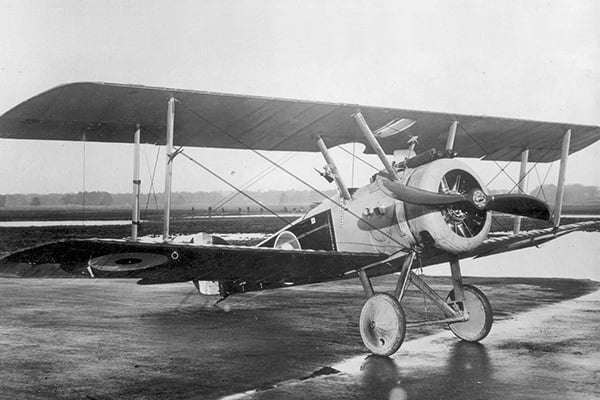Who Killed the Red Baron, and Other Tales of the Sopwith Camel
The Sopwith Camel represents a major leap forward in early aviation technology, from stable observation-based aircraft to the more flexible, agile fighter planes that came into play later during the first World War. Evolved from the Sopwith Pup, the Camel was designed to be more maneuverable and ended up having its own colorful history, including noted encounters with Manfred von Richthofen, the German fighter ace known as the Red Baron.
Meet Tommy and Harry
Briton Tommy Sopwith started flying in 1910 and then was drawn to building planes, which he did before the first World War. One day in 1911, a bold Australian mechanic strolled into his shop and declared that he was ready to learn to fly, and that Sopwith should teach him in exchange for fixing aircraft. It turned out that Hawker was a natural pilot and the two began exchanging their services. Together with designer Herbert Smith, they became the masterminds behind the Sopwith Pup and the developments that led to the Camel, a leaner, meaner aerial fighting machine.
From Pup to Camel
The transition from Pup to Camel was inspired by one of Harry Hawker’s many trips to France to check on the Pup’s performance. The pilots wanted more engine power, and Hawker also found that the Allied plane mechanics were doing some improvising. They were cutting a window in the fabric of the upper wing so that the pilot could see his flight path and targets. In addition to this innovation, Hawker discovered a problem that had yet to be addressed: the canvas belts of ammunition that fed the bullets to the machine gun froze at high altitudes, jamming the machine gun and rendering the Pup useless in combat.
Hawker’s mechanics solved this problem by utilizing the best source of heat on the plane—the engine. They put sheet metal over the breach blocks of the two machine guns, which allowed heat from the engine to be held inside next to guns. This also created a metal hump at the front of the airplane, earning it the name “Camel.”
The Camel in the Air
The Camel first took flight in December 1916, and the pilots were glad to leave the days of jammed, frozen ammunition belts behind them. With this improved firepower, the Camel credited with 1940 victories. However, approximately 420 pilots were killed in the Camel during combat; and 380 perished in the Camel during training accidents.
Although the new design of the Camel solved many of the problems experienced in the Pup, pilots had to adjust to a bigger, more powerful engine and a plane that was generally not as easy to fly as the Pup. The Camel had a rotary engine like the Pup’s, but the wings needed a little more speed to fly, so the Camel required a lot more attention during takeoffs and landings (or anytime it was flown too slow). Camel pilots also discovered that turns were much quicker and easier to make in the same direction the engine rotated (right), and that was used to their advantage in a dog fight!
The Camel and the Red Baron
Who knew that a plane by such a diminutive name could play a role in the death of WWI’s most feared fighter ace? In 1918, Canadian pilots Wilfred May and Roy Brown were engaged in a dog fight with German forces over France. Little did they know that The Red Baron was hanging back (already having about 80 victories under his belt) observing the fray. He noticed one pilot, Wilfred May—a newly minted pilot flying a Camel—exhibiting some amateur moves and decided to pursue this easy target. As the Red Baron raced after May, another Canadian pilot Roy Brown, began chasing the Red Baron. Brown shot his machine gun in many short bursts and one of those bullets ended up in the Red Baron’s back, causing the German ace to make a quick landing and succumb to his fatal injury.
However, if you talk to an Australian, you might get a different story. During the dog fight, Australian infantry were shooting up towards the German fighters, and Australians contend that their gunfire brought down The Red Baron, not the Canadian pilot in the Camel.
Want to learn more about the Sopwith Camel?

